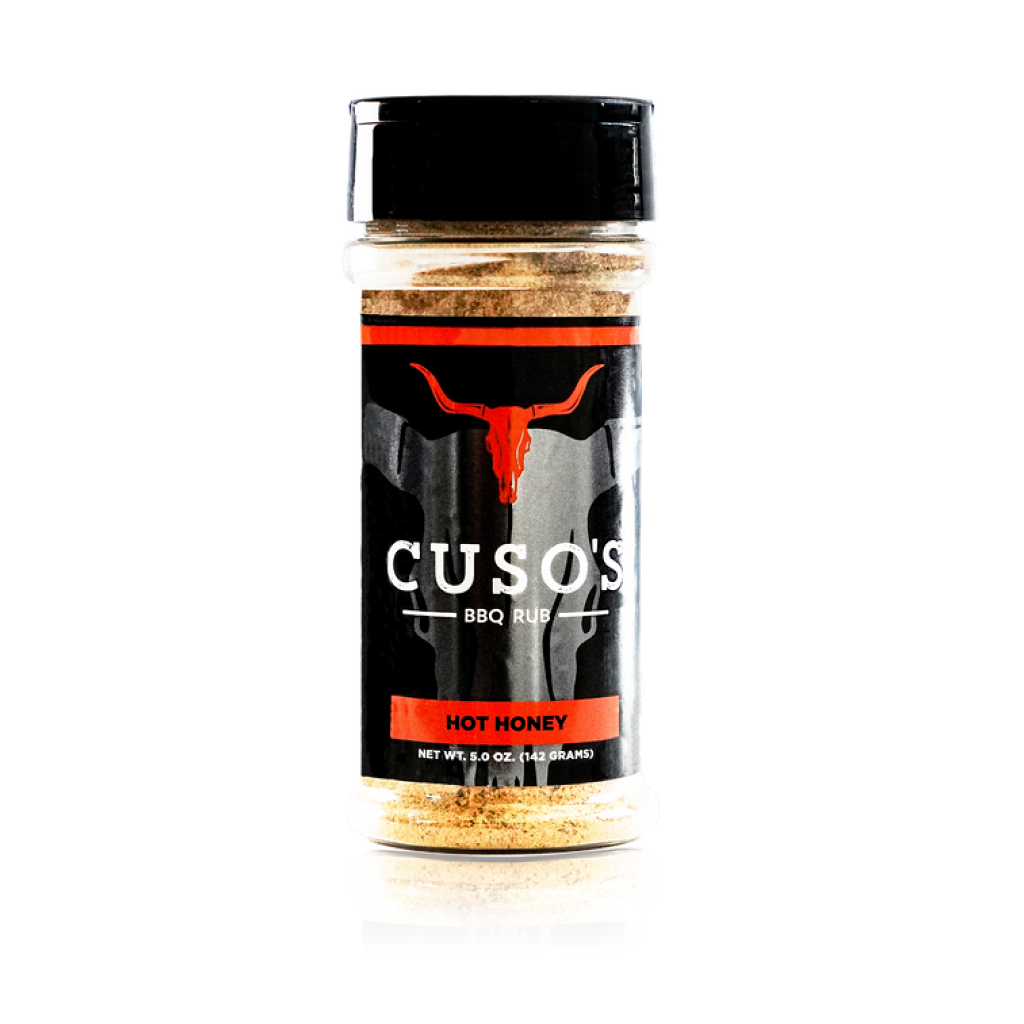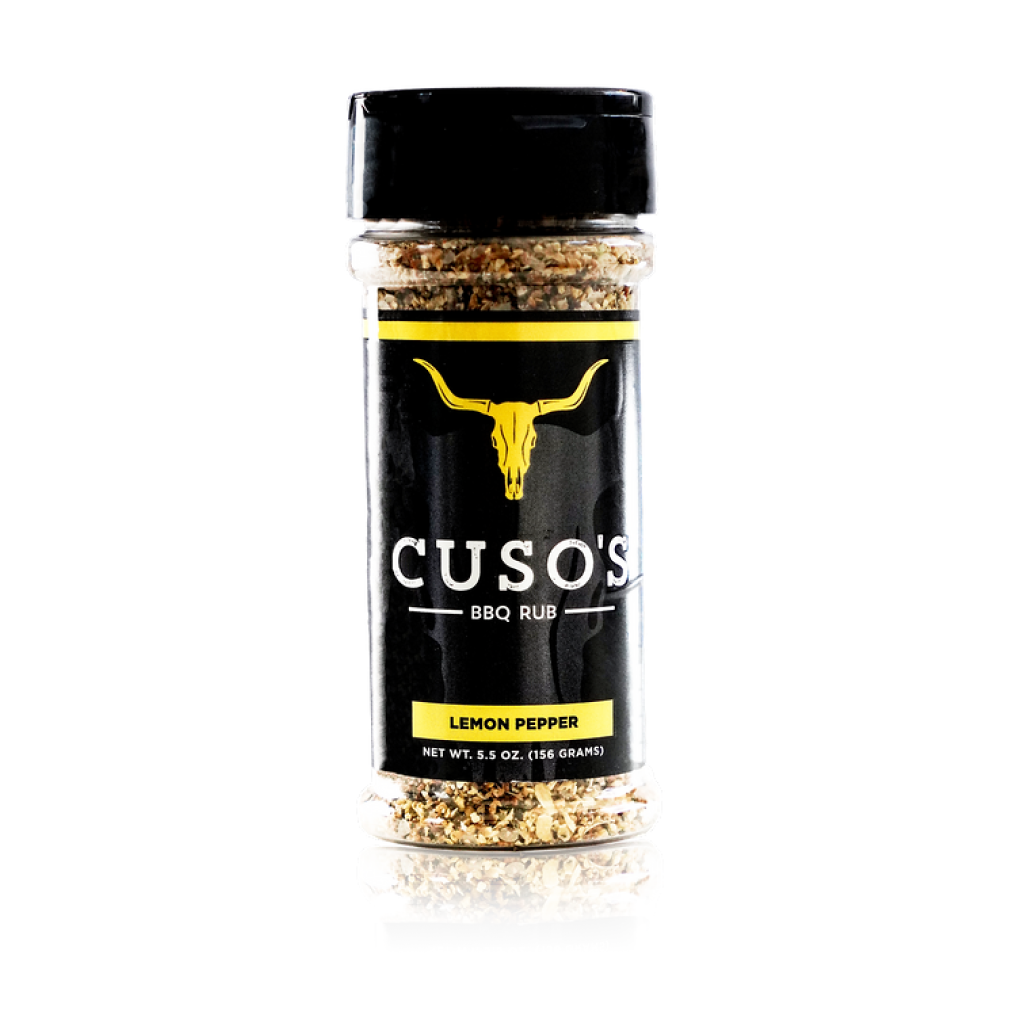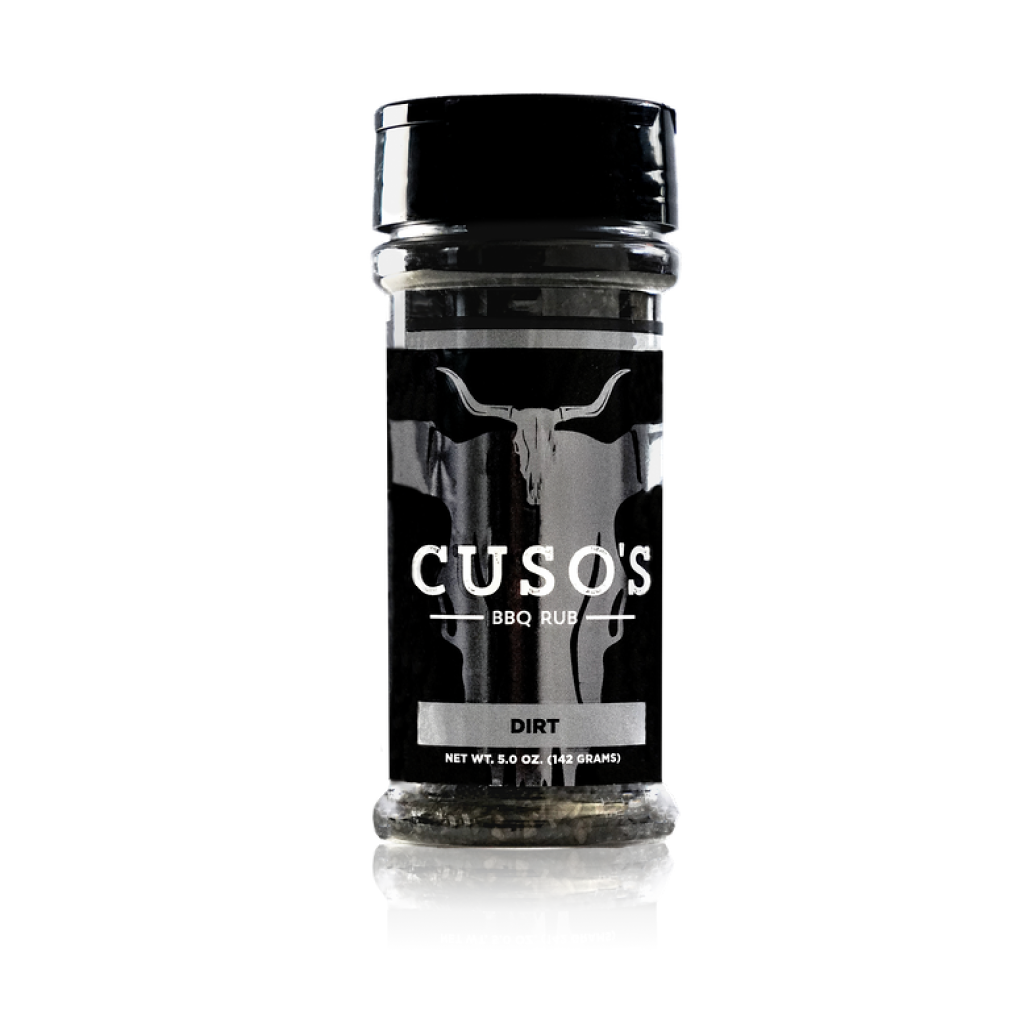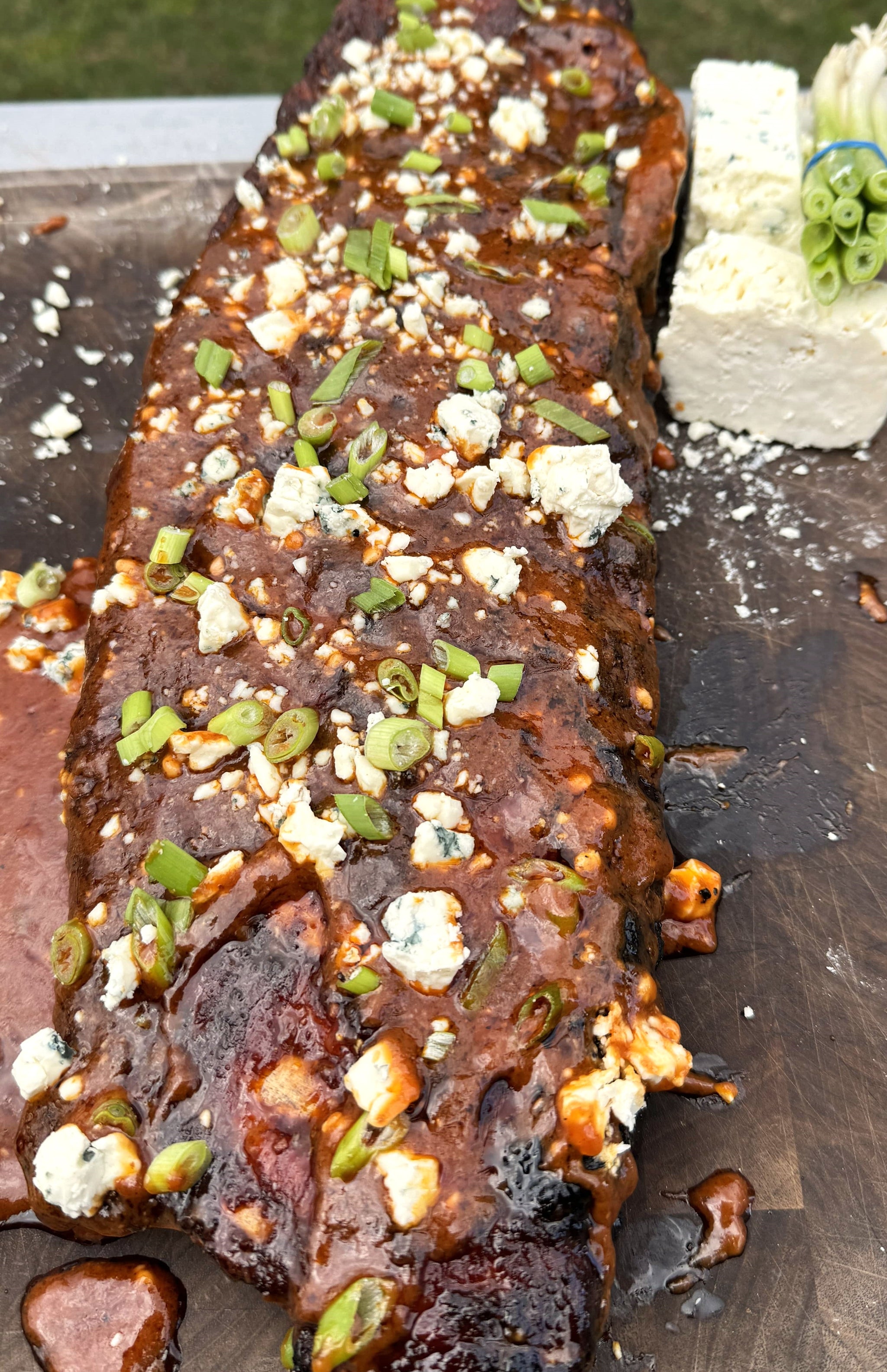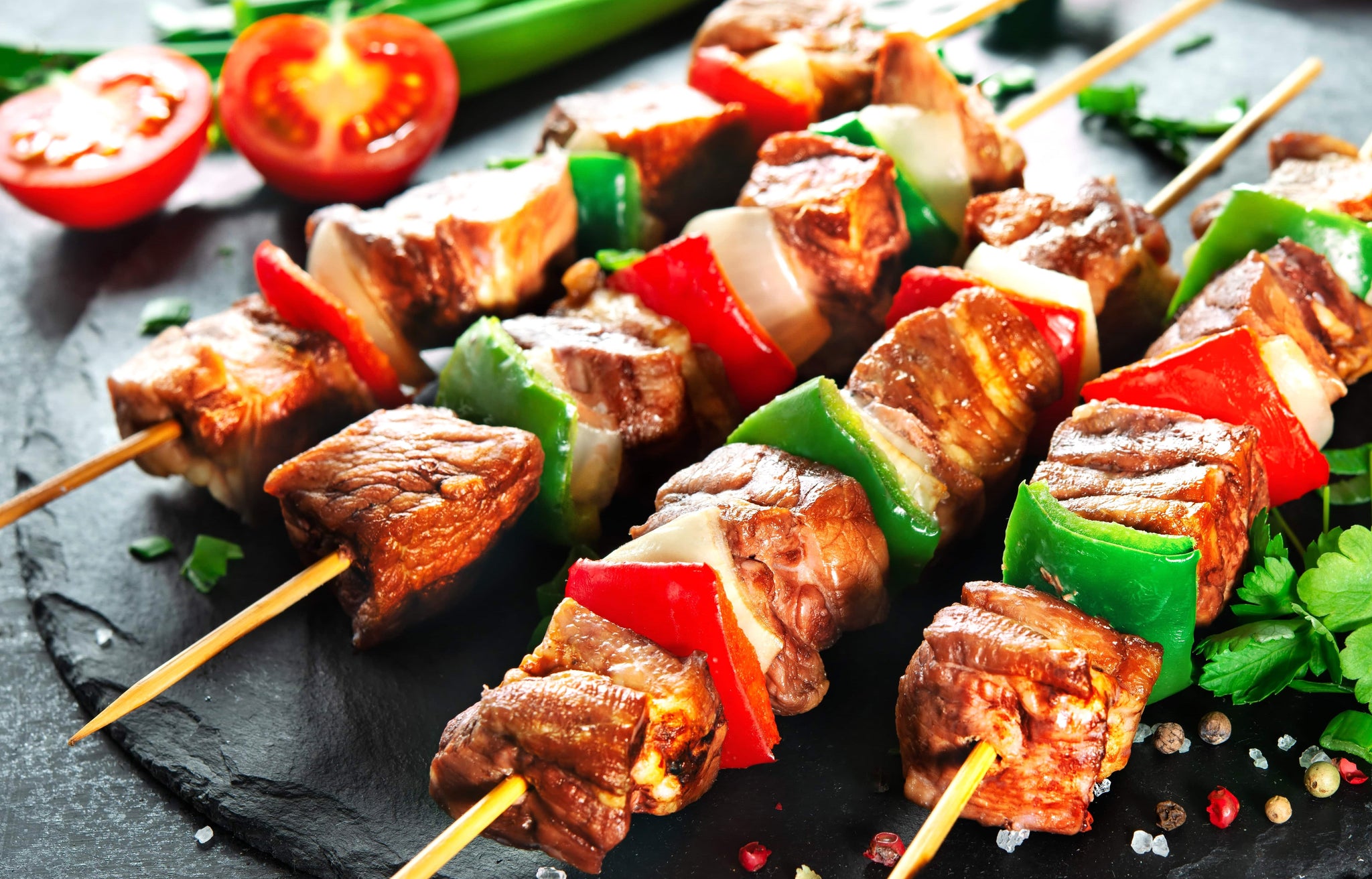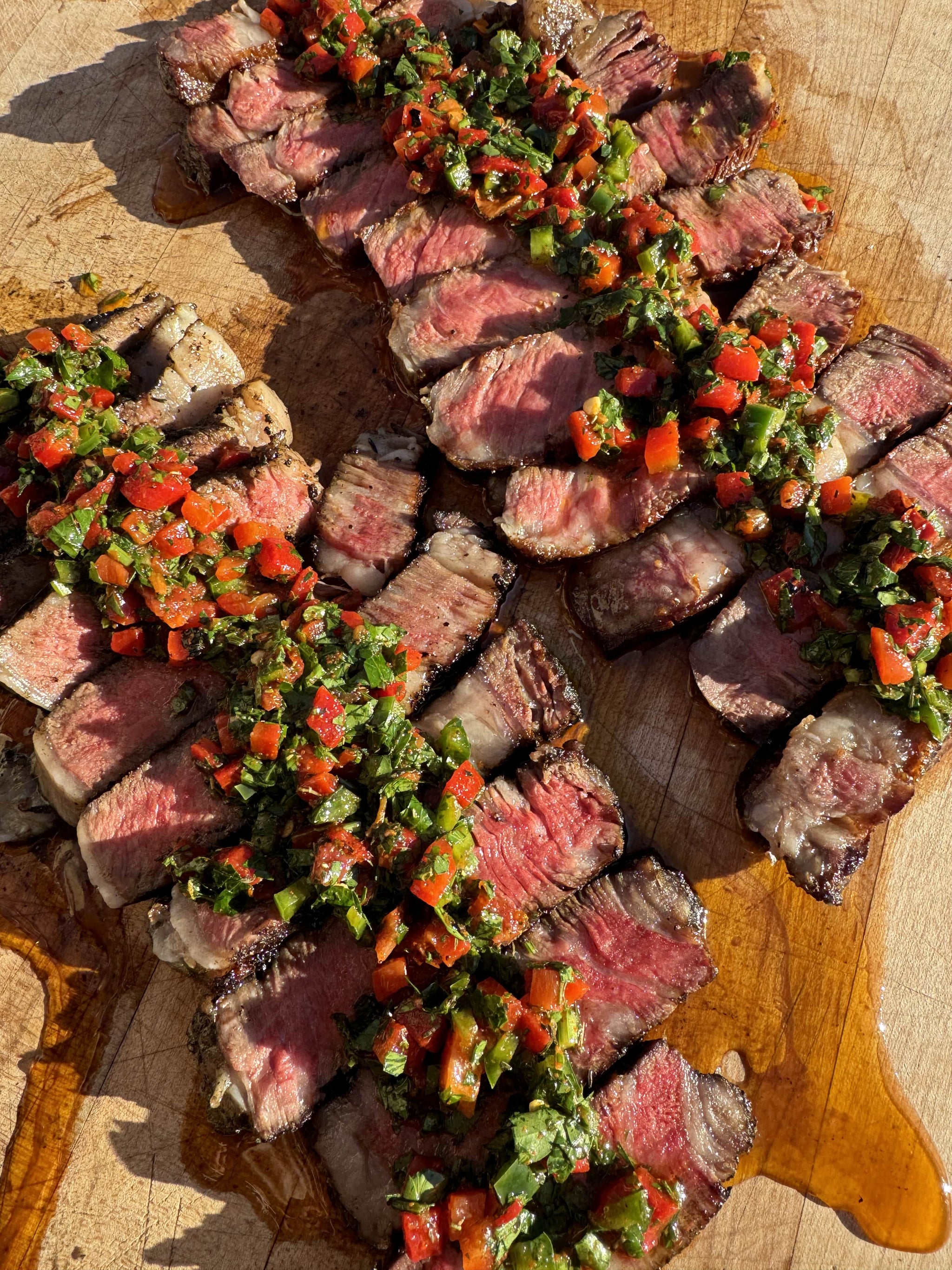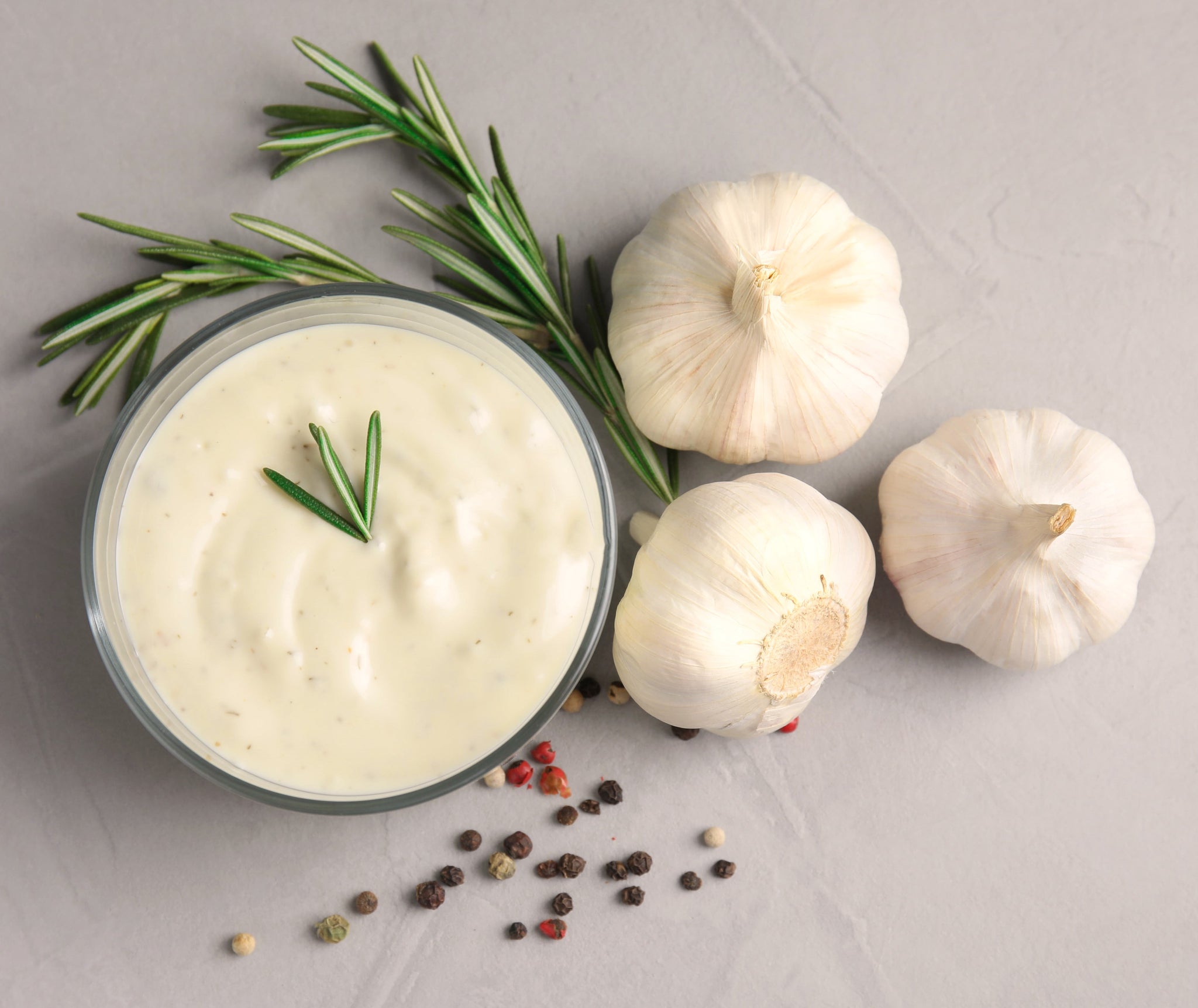You’re out shopping for knives and see very pretty ones with wavy patterns in the metal. It’s sleek, sexy, and aesthetically pleasing. You are likely looking at a Damascus knife, which is my favorite.
Professional chefs and home cooks alike favor Damascus because it’s flexible, hard, and keeps a fantastic edge. In fact, a properly made Damascus blade retains its sharpness longer than a “production” knife. When you pull a Damascus one out for slicing up those mouth-watering beef ribs, it will reliably do the job time and again.
Prepare yourself for a little sticker shock, however. Genuine Damascus steel can cost as much as 4,500 for ONE (yes, one) chef knife. Knockoffs still look pretty and are much more affordable, but you’re not getting as high of a quality knife. In this case, cost often equals quality.
What is Damascus Steel
Damascus steel got its name from two sources. One, it was made in Damascus, Syria. Two, the pattern in the metal mimics those seen in damask fabric.
The method for making Damascus began over 2,000 years ago in India, made of wootz steel. Wootz combined melted iron and steel using little (to no) oxygen. The metal gained carbon from the charcoal and carbide from slow cooling. Sadly, the specific techniques used by master smiths for making wootz were lost sometime in the 1700s.
The modern makers of Damascus Chef Knives typically use between 2-5 alloys, which creates the pattern during forging. The end product is perfect for getting beautiful cuts in everything from pork belly to a dry-aged steak!
Characteristics of the Perfect Damascus Chef Knife:
All Damascus Chef Knives are either forged or stamped. A forged blade begins with blank steel that is heated, then shaped and ground. A hand-forged piece has a tang running from the end of the handle down to the knife’s point. A commercially forged blade may have a bolster between the handle and blade for strength.
By comparison, a stamped blade begins with rolled steel cut into a shape. It’s then heat-treated, sharpened, and ground similar to a forged piece.
Materials:
Damascus Chef Knives come in four common materials.
- Carbon Steel. While these blades sharpen easily, they are vulnerable to staining and rusting. So, while some cooks love them, maintaining a carbon steel knife is work-intensive.
- Ceramic: These hold their edges for a long time. But they may break if you drop them. Sharpening is something best for a professional. On the upside, they never discolor or leave an odd metallic taste in your food.
- Laminated: Laminated knives mix soft-tough steel with a sharp-hard hard material, trying to create the best of both worlds in one kitchen tool. The process deters corrosion while supporting strength.
- Stainless Steel: While stainless doesn’t produce as sharp an edge as high-quality carbon steel, it does resist corrosion and is easier on the budget.
No matter the material, all Damascus Chef Knives benefit from having a quality cutting board, which keeps them sharper than cutting on the countertop.
What is a Chef’s Knife?
The best way to think of a Chef’s Knife is akin to a Swiss army knife in terms of flexibility. If you can only choose one tool for your kitchen arsenal, get a Chef’s Knife.
On average, a Chef’s Knife is 8-inches long. The blade has a slight curve allowing for a rocking motion seen often with dicing and mincing vegetables.
Damascus Chef Knife Uses
Do you want to mince garlic? ✅
Dice an onion? ✅
Slice through ribs? ✅
Spatchcocking a turkey? ✅
Carving brisket? ✅
When combined with a paring knife and a utility knife, you have pretty much all you need for daily cooking.
Buying Guide for a Damascus Steel Chef’s Knife
There are a lot of fake Damascus knives on the market. Figuring out which ones are the real deal isn’t easy. Nevertheless, there are signs for which to watch. A real Damascus knife has detailed markings in natural patterns like a wave, raindrop, feather, and twist. On the other hand, fake blades usually have really elaborate edges with unnatural patterns.
Look at the folds. The fold pattern in a real Damascus knife will typically be uniform in the blade, edge, spine, and even the tang. Also, watch for respected brands like Shun, Enso, and Yoshirhiro. Do your research at sites offering consumer reviews, too, before you buy.
If you are a serious cook or griller, try to buy once and buy right. You are better off spending a little extra on a high-quality Chef Knife than buying five cheap ones over two years.
Pit Master’s Memo
I feel that owning a Damascus Steel Chef’s Knife is like having a very functional, beautiful piece of art. You want to maintain it properly. For example, you can extend the useful life of a carbon steel Damascus blade by applying food-safe carnauba wax or canola oil to it after washing and drying. This prevents discoloration and rust. Additionally, carbon steel is sensitive to acidic foods. So, if you’re cutting up fruit, wipe it off immediately thereafter.
Speaking of wiping, any good blade should be washed and dried immediately after use. A microfiber cloth is best for drying. After, store it in a place where the knife won’t experience frequent temperature or moisture changes. High moisture can bring rusting; low moisture can dry and damage natural handles. Do not use a leather sheath as the tanning chemicals can lead to oxidation.
If you follow these simple guidelines I’ve provided, your Damascus Chef’s Knife will serve you well for many years to come.


